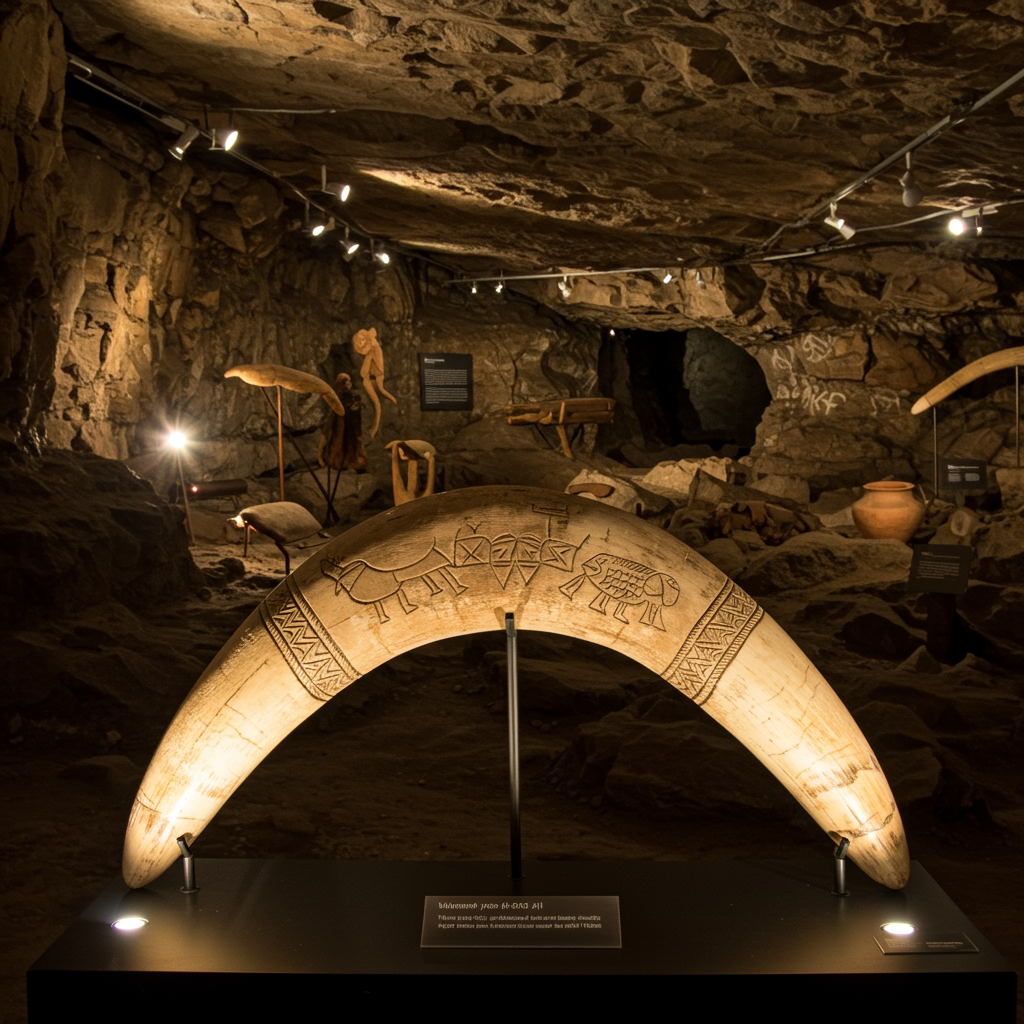Unearthing History: Europe’s Potentially Oldest Boomerang Discovery
Archaeologists have made a remarkable discovery in Poland that could redefine our understanding of ancient tools and the ingenuity of early Homo sapiens. Unearthed from the Obłazowa cave in southern Poland, a striking artifact made from a mammoth tusk is being identified as potentially Europe’s earliest known boomerang, and possibly the oldest in the world.
Dated to approximately 40,000 years ago, this incredible find significantly pushes back the timeline for complex throwing tools in Europe. Previous contenders for the oldest boomerang were wooden examples found in Australia, dating back only about 10,000 years. While much older throwing sticks have been found, like a 300,000-year-old example from Germany, the Polish artifact holds the distinctive curved shape and characteristics of a boomerang.
Pinpointing the Age of a Prehistoric Tool
The mammoth tusk object itself was initially discovered about 40 years ago, but determining its precise age proved challenging. Early attempts at carbon dating the artifact directly yielded a date of only 18,000 years, which researchers suspected was too young, potentially due to contamination.
To establish a more reliable age, a new study published in the journal PLoS One focused on dating materials found in the same archaeological layer as the boomerang. Analyses on a human finger bone from the layer indicated it belonged to a modern human who lived at least 31,000 years ago. Crucially, a collection of animal bones found alongside the boomerang provided a more specific age range, dating to around 41,500 years ago. Based on this contextual evidence and stratigraphic analysis, a statistical model places the creation of the boomerang firmly over 35,000 years ago, most likely between 42,365 and 39,355 years ago. This robust dating confirms the artifact’s immense antiquity and its association with early Homo sapiens activity in the region.
A Unique Tool from Mammoth Ivory
Measuring about 72 centimeters (28 inches) in length, the boomerang’s composition is particularly noteworthy. Unlike the more common ancient boomerangs made of wood, this example crafted from mammoth ivory highlights the remarkable resourcefulness of our early ancestors in utilizing available materials from their environment.
Researchers from institutions including Jagiellonian University in Poland noted that the artifact’s shape and flat-convex cross-section bear a strong resemblance to modern non-returning boomerangs, specifically the “Queensland type” used by Aboriginal peoples in Australia. Experimental studies hinted that it could indeed fly when thrown, functioning as a non-returning throwing stick designed for hunting or other tasks rather than circling back to the thrower.
Non-returning boomerangs were versatile tools used globally by ancient cultures. For instance, a 6,500-year-old straight boomerang was part of a hunting kit found in a Texas cave, illustrating the widespread use of such implements. While that Texas find is significantly younger, the Polish mammoth ivory example demonstrates this tool type’s deep roots and sophisticated design much earlier in human history.
More Than Just a Weapon: Cultural Clues
The significance of the Obłazowa cave discovery extends beyond technology. The layer containing the boomerang also included other fascinating artifacts such as fox fang pendants and stone blade tools, all coated with red ocher. This suite of finds, particularly the use of ocher and symbolic items like pendants, is characteristic of early Homo sapiens behavior and contrasts with finds from deeper layers attributed to Neanderthals at the same site.
Markings found on the boomerang itself are considered critical for understanding the symbolic behaviors of early Homo sapiens groups in Europe. The presence of the boomerang alongside the pendant suggests an emerging regional artistic identity dating back 40,000 years, drawing parallels with the distinct ivory figurines and flutes found in Germany’s Swabian Jura from a similar period.
Intriguingly, a fossilized fragment of what appears to be a human little finger or toe bone was discovered near the boomerang. Archaeologists speculate that this human remains, found in such proximity to significant artifacts and red ocher, could be indicative of a shamanistic ritual. This interpretation is supported by comparisons to ancient rock art in France and the Iberian Peninsula depicting human hands with missing digits, suggesting a potential link to ritual practices.
Insights into Ancient European Life
The discovery of the 40,000-year-old mammoth tusk boomerang from Poland offers groundbreaking insights into the adaptive strategies, technical skills, and cognitive advancements of early Homo sapiens during the Paleolithic period in Central Europe. It highlights their ability to innovate with diverse materials like ivory and create sophisticated tools. Furthermore, the associated finds provide a rare glimpse into the symbolic world, artistic expression, and potential ritual practices of these ancient groups, illustrating the complex interplay of technology, culture, and environment during the earliest phases of human dispersal across the continent.




